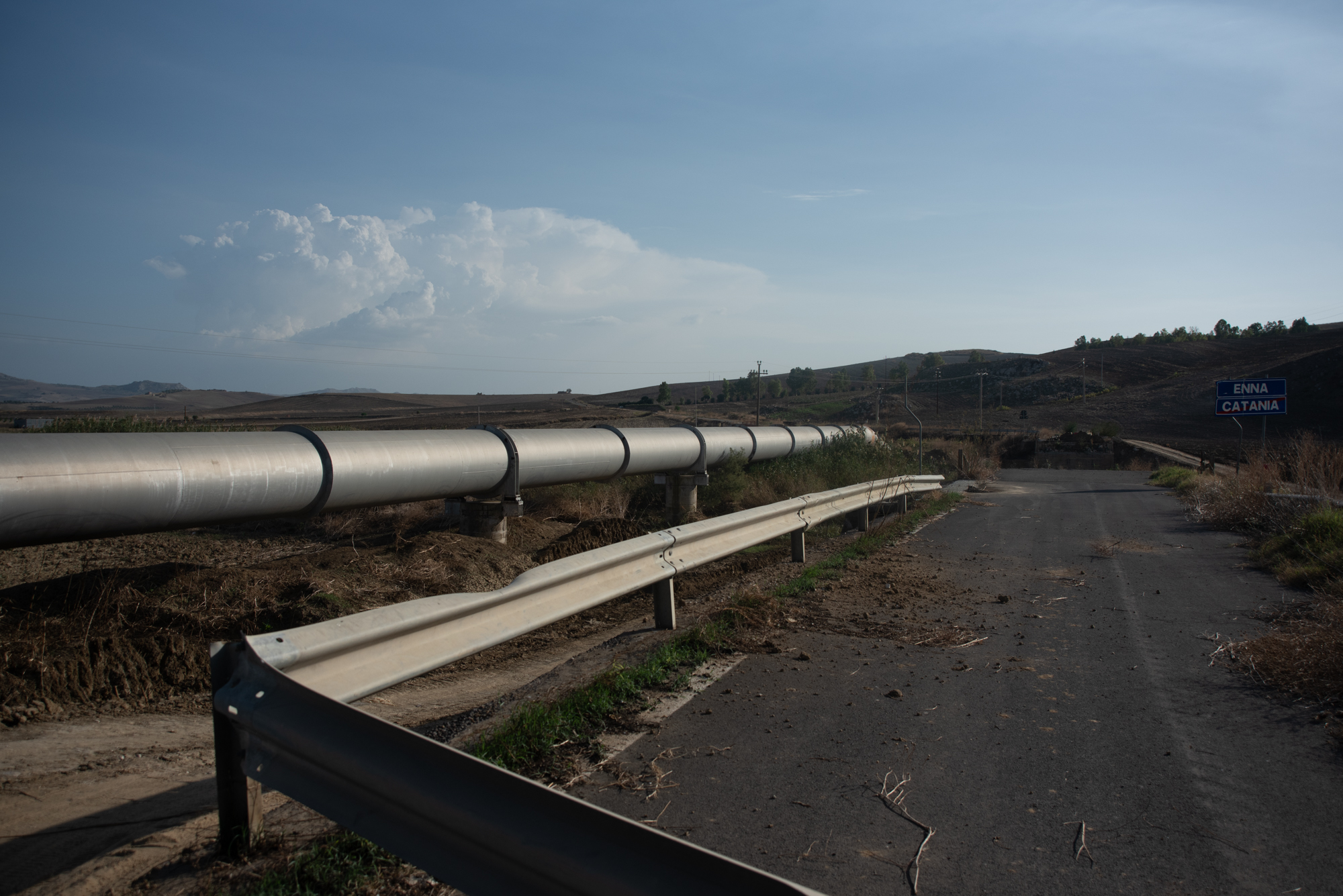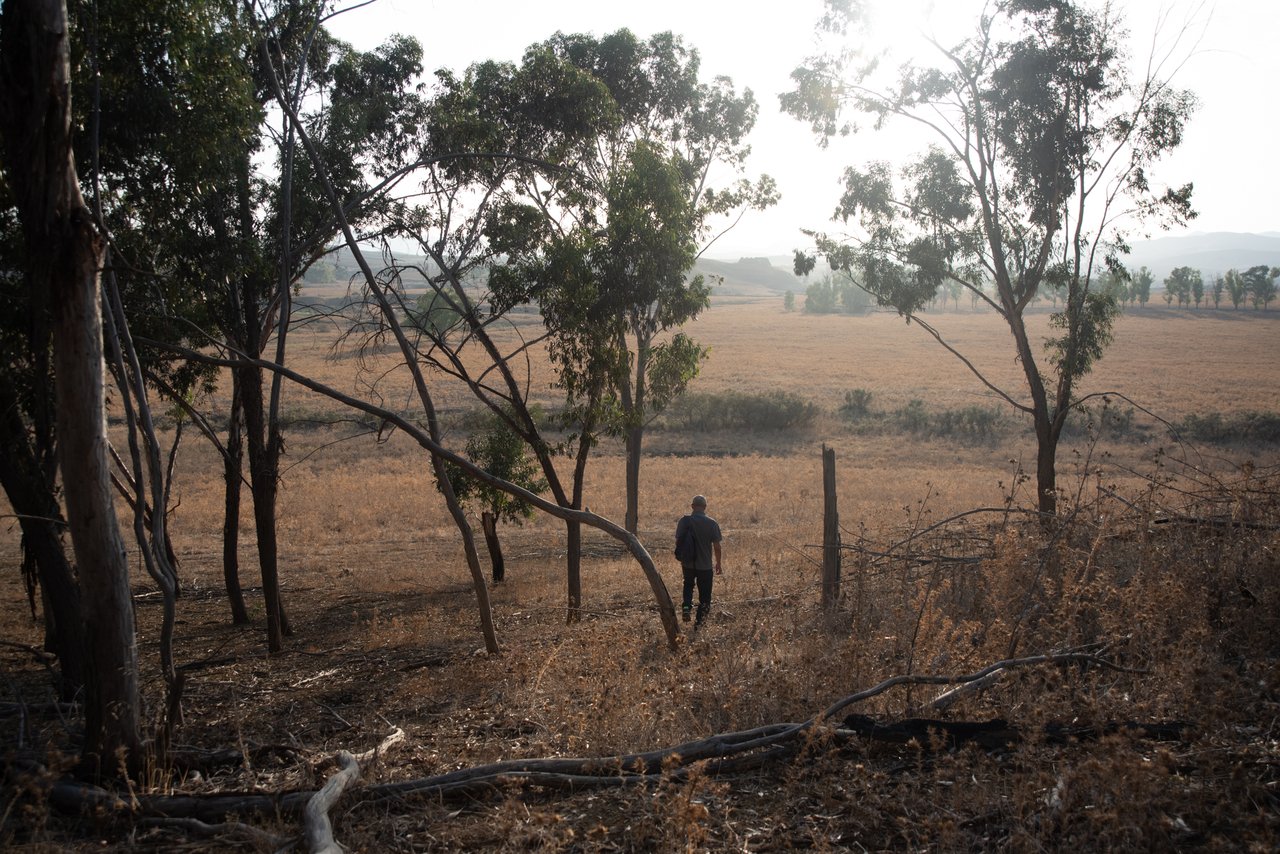Feature
Thirsty Sicily — water scarcity in the Mediterranean basin
In the council chamber of Aidone, a town in the Sicilian hinterland with just under 5,000 inhabitants, a citizens' committee has gathered to discuss an issue of extreme urgency for their community: water.
The citizens of Aidone are concerned, because the new water tariffs for billing from 2024 to 2029 – determined by the Authority for Energy Networks and the Environment – will result in further increases in water bills.
The province of Enna, where the municipality of Aidone is located, is one of the poorest provinces in Italy. Yet it pays the highest water rates in Sicily, with an average annual expenditure per household of €766.
The committee convened an assembly to engage citizens in a transparent dialogue about the reasons behind high taxes and to collaboratively explore potential solutions.
Armed with informative slides and documents, the committee shed light on the intricacies of taxation, addressing the concerns that prompted citizens to call for the assembly in the first place.
Among those present is the mayor of the nearby town of Piazza Armerina, Nino Cammarata, also the director of the local Territorial Water Assembly Enna, which according to the citizens present, is the body responsible for the high taxation that burdens them.
During the debate, the theme that emerges most frequently is: water infrastructure is crumbling, and the cost of their maintenance falls mostly on the citizens.
Sicily indeed has a decrepit water network. In 2020, Istat found that 52.5 percent of the water volume introduced into Sicilian water networks and used for civil purposes is lost.
With severe drought affecting the entire Mediterranean basin, sustainable water management is of paramount importance.
However, water interruptions are now daily occurrences. In recent weeks, the region of Sicily has declared a state of crisis by approving a water rationing regime that will affect about one million citizens.
For two years water has been cut off in the municipality of Aidone in the evenings during the summer, when water demand is typically higher due to increasingly high temperatures.
July 2023 was recorded by the Sicilian meteorological service, Servizio Informativo Agrometeorologico Siciliano (SIAS) as the hottest month in the last 20 years. And for eleven consecutive days, extremely high temperatures, equal to or exceeding 40°C, were recorded in the Sicilian hinterland.

About €3.9bn in EU funds
The heat and the resulting water demands from civil, agricultural and industrial sectors makes it even more important to improve water management. Purification could be a necessary choice for the near future.
But also in the context of water purification, Italy finds itself lagging behind. There are currently four European infringement procedures underway, involving more than 900 clusters.
A significant portion of the National Recovery and Resilience Plan (PNRR) is dedicated to improving Italian water infrastructures.
The PNRR is Italy’s implementation of Next Generation EU, the European Union’s post-Covid recovery program. Italy stands as the foremost beneficiary of the EU's Next Generation funds, with total projected investments amounting to €222.1bn.
The PNRR, which also encompasses the green revolution and ecological transition, allocates a portion of its resources to enhancing water infrastructure, aiming to reduce water loss in drinking water networks by at least 15 percent.
A total of €3.9bn has been invested in the improvement of water infrastructures throughout Italy, with about 60 percent of the funds allocated to the southern regions facing the greatest challenges. About €900m has been specifically earmarked for reducing losses in the water distribution network, with Sicily being the second-largest beneficiary region with around €239.6m.
In April 2022, the first temporal window opened for Water Management Authorities to submit funding proposals under the PNRR aimed at reducing losses in water distribution networks. 28 out of 119 requests originate from Southern Italy, amounting to approximately one-third of the total requested contributions.
However, in Sicily, a total of eight projects have been rejected within the first timeframe of the funding application.
The requests received were much higher than the available resources. Furthermore, several projects were not admitted due to failure to meet scoring limits and lack of admission requirements. This confirms that local authorities have struggled to develop projects in line with the tough requirements of the PNRR. Yet, among the accepted funding for Sicilian water, some controversial projects can be found.
In the midst of a territory strewn with golden and dry fields, surrounded by hills and topped by the ruins of a Norman castle, the construction works of the Pietrarossa Dam continue.
The Pietrarossa Dam has received a record funding of €82.2m from the PNRR, a sum that has stirred the anger of local communities and environmental associations. The dam is part of a water system aimed at irrigating the plain of Catania, 43,000 hectares of fertile plain where citrus fruits are cultivated and shipped throughout Europe.
Accompanied by volunteers from Siciliantica, an association for the protection of Sicilian cultural heritage, we walk along the fences of the construction site.

Forward-thinking
Sergio Amata, a retired archaeologist and member of the association, points out the spot where an archaeological find dating back to the Roman era is located: a statio romana, a stopping area dating back to the imperial era along the ancient wheat road that connected the cities of Catania and Agrigento.
"If the dam ever goes into operation, the site will be buried by water," explains Sergio Amata, but adds with a sardonic smile, "if there will ever be water." In fact, the stream that the dam would block is completely dry. Part of the funding will be allocated to develop a virtual reconstruction of the archaeological site near the dam. Beyond the fence, the construction site guards take photos of us.
The first works on the dam began in 1963 and have never been completed (today, it is 95% complete) and have experienced a series of stalls caused by errors in the dam's construction and subsequently by a judicial seizure of the site by the Enna Public Prosecutor's Office, which was investigating abuse, refusal of office acts, as well as defacement of natural and archaeological beauties.
Ornella Segnalini, appointed as the extraordinary government commissioner for the completion of the Pietrarossa Dam in Sicily, commented on the project as "a forward-thinking vision that through the Pietrarossa dam would have allowed the irrigation of a huge part of the plain of Catania. A vision of the future that is often lacking today."
However, environmental associations are not so optimistic. "Forward-thinking? Today, rivers are being freed," says Giuseppe Maria Amato, regional manager of protected natural areas for Legambiente Sicilia, "in 2022 alone, 425 barriers were demolished. The EU's biodiversity strategy aims to renaturalise at least 25,000km of rivers.
The best-performing nation today is Spain, a country suffering from thirst like Sicily. Then we have Sweden and France. Italy is not competing."
Intervention calls
In Sicily, about 150 years ago, there were about 90 percent more natural wetlands. Reclamation carried out during the fascist regime and water interventions after the First World War shaped and drained these areas for agricultural and civil purposes.
"Let's work to recreate them: ponds, marshes, lagoons, river meanders. In these areas, water remains, recharges the aquifers, and allows rivers to expand in case of flooding. In these areas, biodiversity soars, enabling the return of hundreds of species now extinct, restoring balances," comments Giuseppe Maria Amato.
Sicilian fields need water, and the persistent drought makes the situation dramatic. In the Enna territory, in the Sicilian inner region, hectares and hectares of wheat fields stretch out. Under the pylons being rebuilt for the highway connecting Enna to the capital Palermo, Silvia Turco, a farmer who produces local and ancient varieties of wheat and legumes, shows us a field of Maiorca, a local variety of wheat widespread since the 1920s in Sicily. She asks us to pay attention to the colour variations in the nearby fields. Yellowish patches alternate with greener patches, demonstrating the plant's water stress.
Silvia Turco shows us an ear of wheat: "From this wheat, usually four or five ears sprout from one grain, but here we see only two. This means that this year we will have a loss of at least 50 percent of the product, all due to drought." Her farm relies solely on rainwater, and although local varieties are resistant to Sicily's notoriously arid climates, this extreme drought could jeopardise the entire production system.
"October 2023 was marked as the driest since 1921 in Sicily," explains Ramona Magno, head of the Drought Observatory section of the Climate Services at the CNR Biometeorology Institute. "The most important factor of this drought is the scarcity of precipitation in winter periods combined with rising temperatures."
Moreover, prolonged higher-than-normal temperatures add to the lack of rain. "This implies greater evaporation and causes soils to dry out faster, as well as draining even the largest reservoirs," explains Ramona Magno.
This trend also affects the entire Mediterranean basin, making Sicily a kind of litmus test for the future climate of Mediterranean Europe.
As Massimiliano Pasqui, a researcher at the Drought Observatory, explains, the solution to such a widespread problem must be systemic.
"There should definitely be interventions on the water network. But it needs to be integrated with new ways of farming and thinking about water use. We should act on the ground because desertification is also due to intensive agriculture that reduces soil fertility with the intensive use of machinery, soil compaction techniques, and soil salinisation," he said.
Another summer of record temperatures is looming. And with the lack of water, Sicilian citizens are very concerned.
A crisis that today affects the largest island in the Mediterranean but could involve continental regions in the coming years.
In the council chamber of Aidone, the debate has ended, with increasingly heated tones from tired and angry citizens. Yet none of them mentioned the ongoing climate crisis; instead, only the increase in bills was mentioned.
This article was developed with the support of Journalismfund Europe.
Author Bio
Pierluigi Bizzini is an Italian freelance journalist, covering migration, environment and digital rights.